Sam approached me about making a sculpture of the remains of the Tsavo lions in their present state at the field Museum as FMNH 23970 - the standing mount - and FMNH 23969 - the crouching mount. Over a period of several months, we met occasionally to discuss the work, but also the phenomenon of the lions themselves. My general interest in how natural phenomena are experienced and manipulated in space, and in the methods used to collect and record the data needed to create any shape digitally, was triggered by the many stages that these lion figures went through, from living, breathing animals to museum specimens, with all their associated stories.
From a rather straightforward concept that I thought I would be able to grasp quickly at the beginning of our conversations, involving traditional scanning techniques and a technical approach to museum artefacts and the forms presented, I felt in our discussions that we were diving more and more into the stories, the people and the subjectivities that the timeline of the lions presented to us. I think it was at this point that we moved a bit away from the simple digitalisation of the current forms and the idea of the replica to the question of the gap left by these 'objects'. Any organic being, and the material that it consists of, or used to consist of — in the sense of tissue and water — is exposed to a kind of loss of attributes, such as colour and consistency, as well as the breaking off or pulverising of small parts, due to interaction, tiny changes in humidity, or exposure to visitors, even after blood, organs, and everything else beneath the surface have been removed, leaving only a shell of skin and hair. The title was inspired by the loss of material and information over time, and by aspects that might not be visible at first and can easily be overlooked.
Simply put, the creation of a digital model of the lions involves capturing many 2D images and aligning them in three-dimensional space to recreate the position of the cameras around the objects by overlapping parts of the images from all sides. By recognising key features that appear in multiple images, the positions of the cameras and the lions can be calculated. Based on this and other factors, such as details about the lenses, the position of these points in space can be defined by a vector value — a number for each axis (X, Y and Z). Together, all these points produce something called a point cloud. This provides a visual representation of what the lions look like as a digital copy that can be viewed from all sides. At this stage, the model essentially exists as a spreadsheet with one column for the number of points and another for the position of each point (one value for each axis). This list is like a recipe for cooking a 3D model, or in this case, creating its base. The technical details of what the computer needs to read and write when using 'old-school', non-'intelligent' algorithms are important for me to communicate, as they exemplify my approach to view shapes and digital spaces. From these point clouds and the subsequent conversion steps that generate a printable model, with data flowing from one step to the next, this list effectively serves as a manual for the printer in the form of G-code (geometry code), instructing the print head precisely where to move on each layer.
For me, one aspect of the miniature model is to think about the construction and the flow of information or data, and the still existing connection to previous industrial processes. This seems especially important, since some people seem to perceive the information age as a less materialistic step after industrial expansion, when in fact it requires vast amounts of human labour, resources and energy to process large quantities of data through computing units in a facility. It should be noted that this is already the case for many traditional computing algorithms and cloud services. The resources needed for machine learning and AI industries (in technical and sociological terms) far exceed the resources already required, as many others have already stated. While this is and will be relevant for processes of digitalising objects and their manipulation, my focus when creating the miniature models was on the materiality and the contemplation exercise of filling empty space with numbers to end up with yet another real-world object.
Presenting the current state of the lions' physical appearance through technical limitations such as the use of a tree-support model for FDM printing seems to me a fitting addition to the research. In the absence of the actual lions, the imprint of their poses and the placement of the taxidermy process is presented through the tree-support model. The miniature now exists as another loop or layer of people involved with the lions' histories. They have been processed and re-processed through human engagement and can be seen through the traces that the history of the lions still leaves behind.
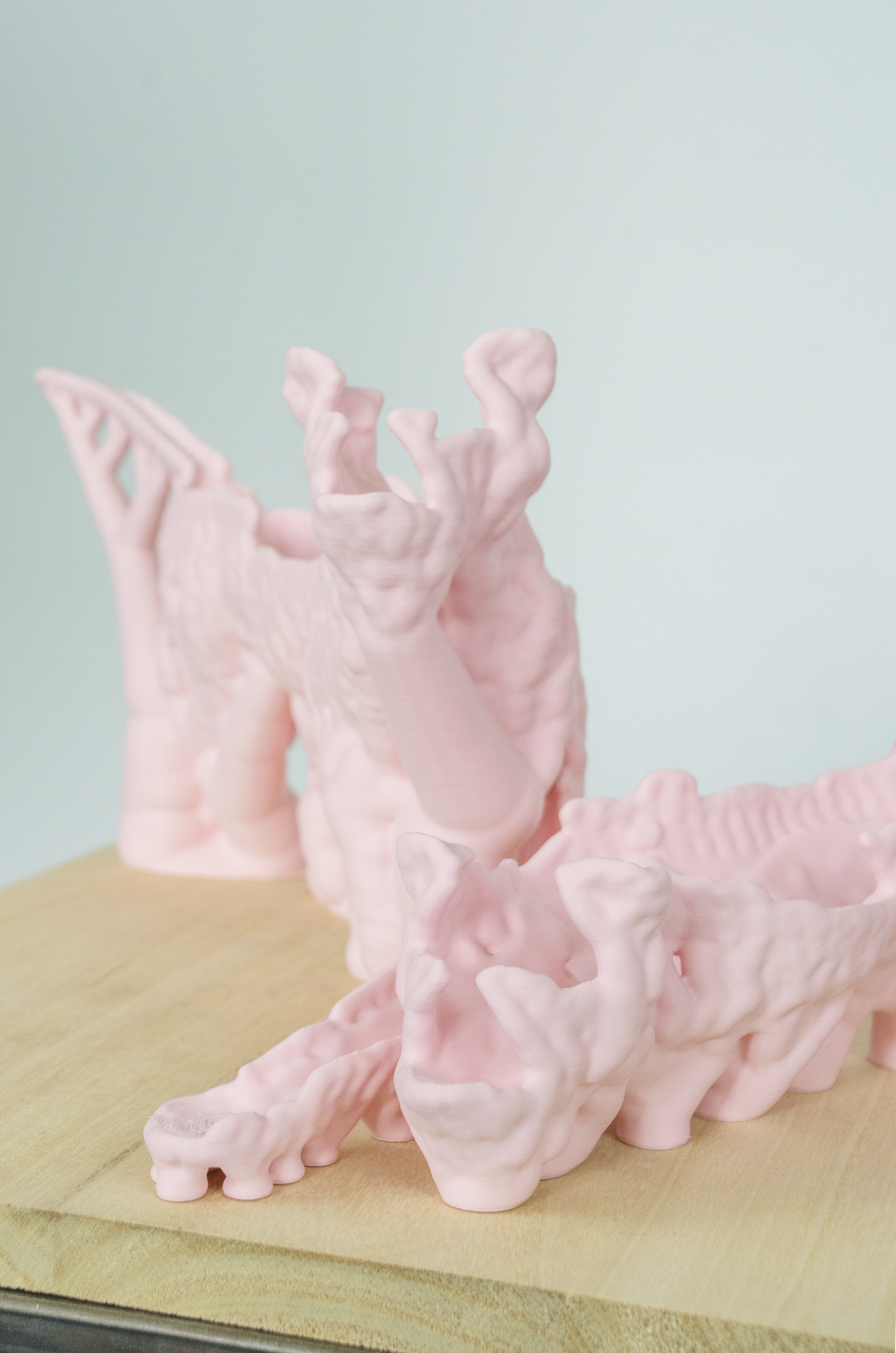
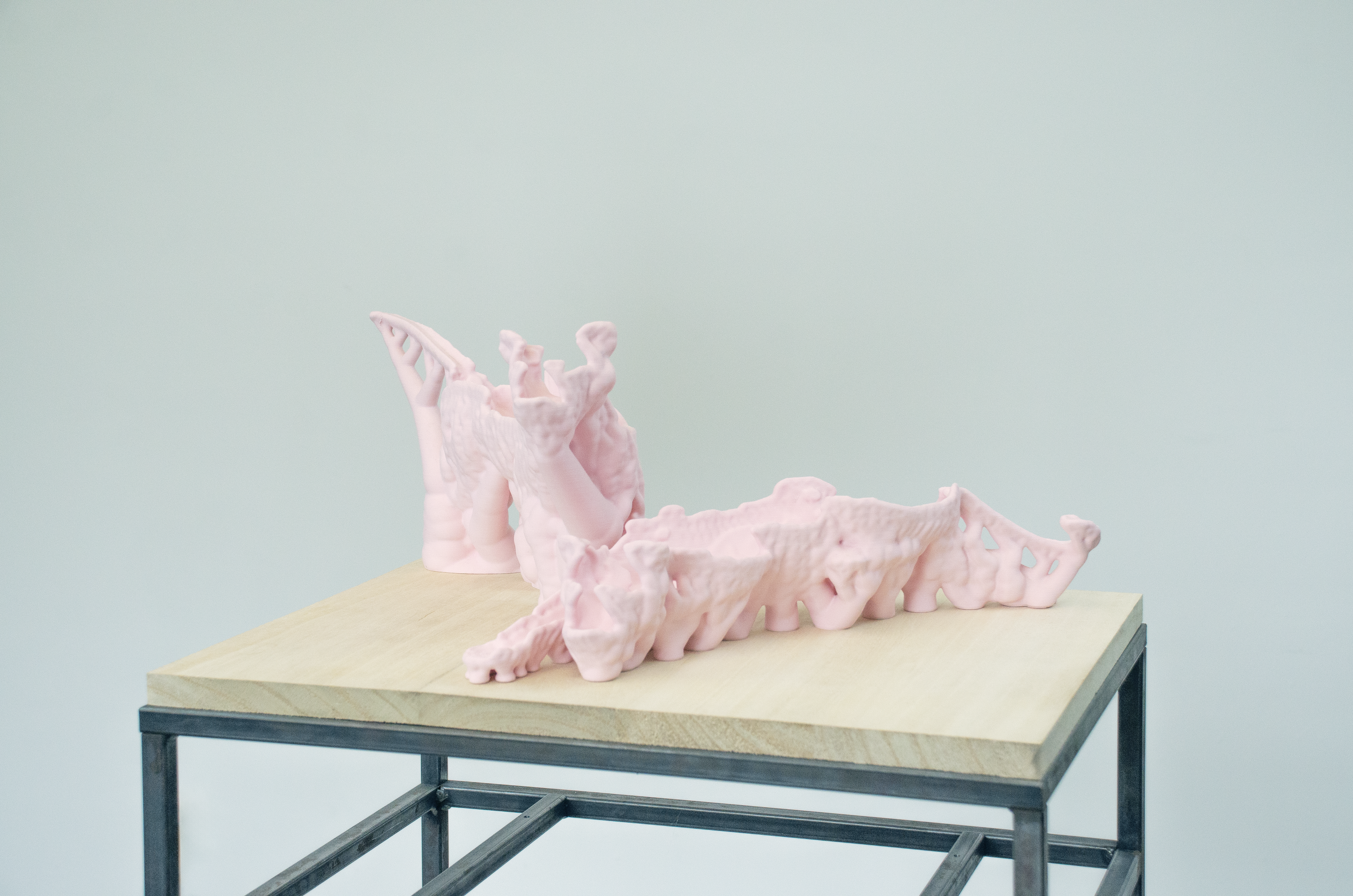
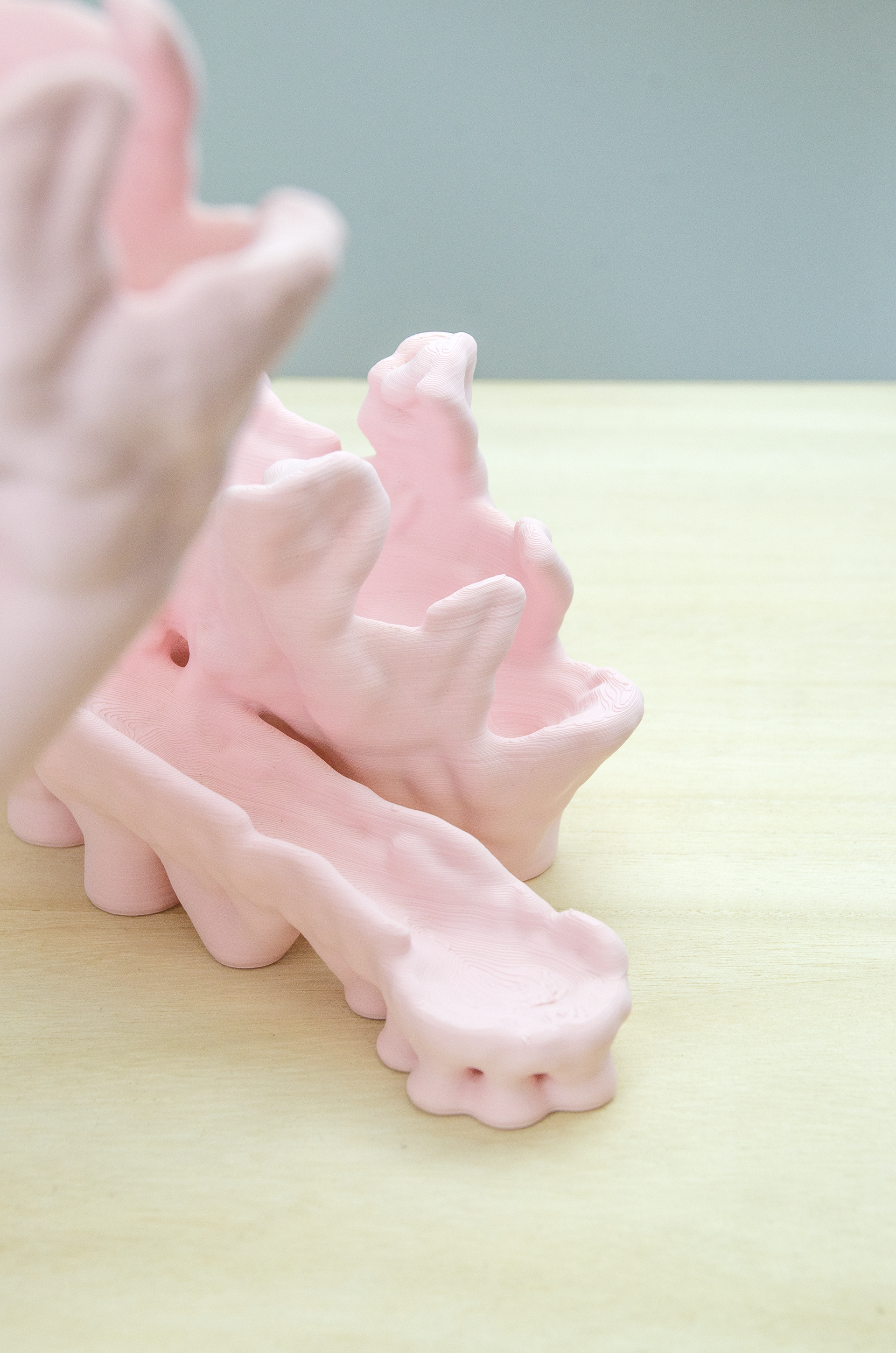
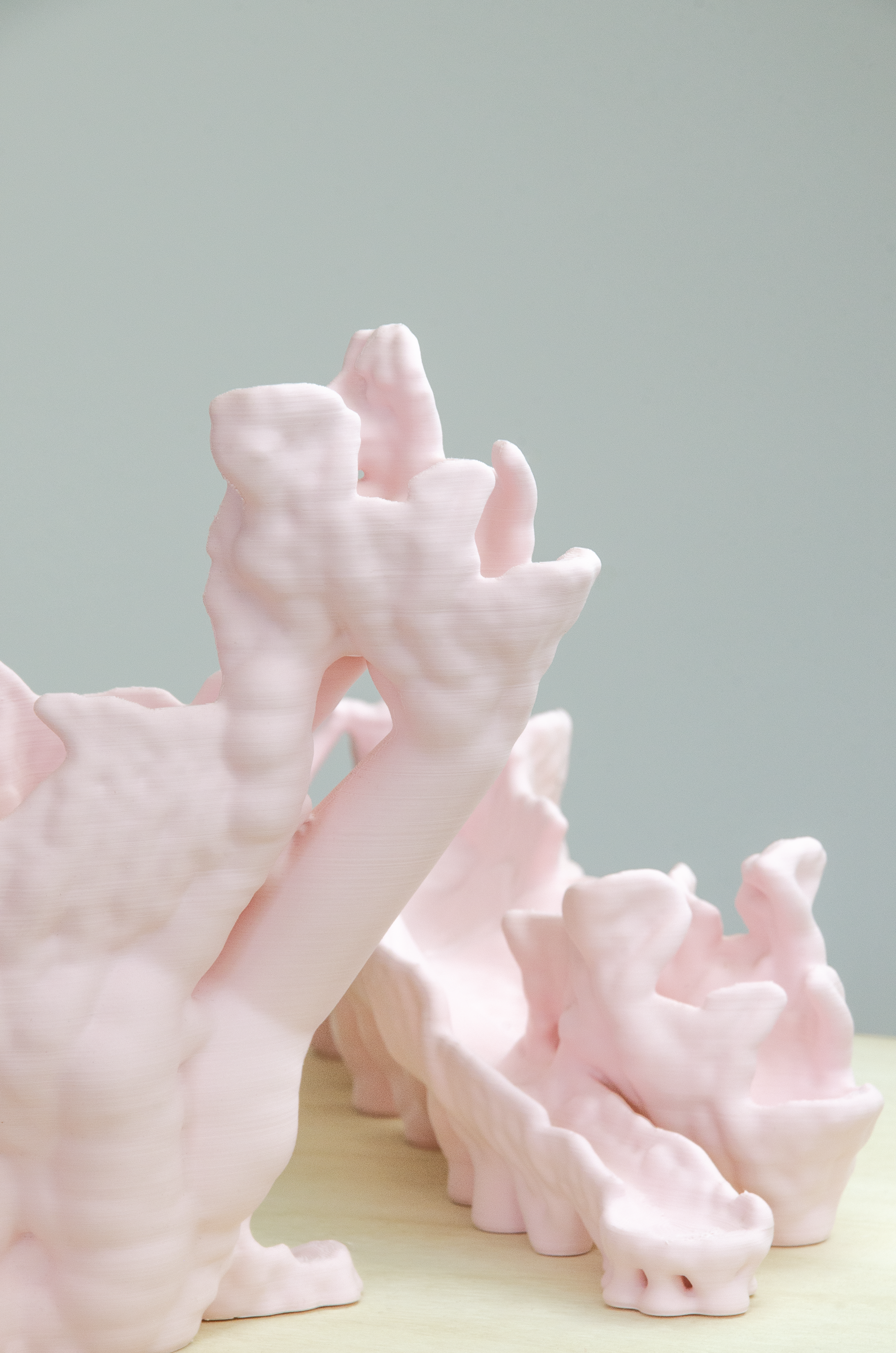

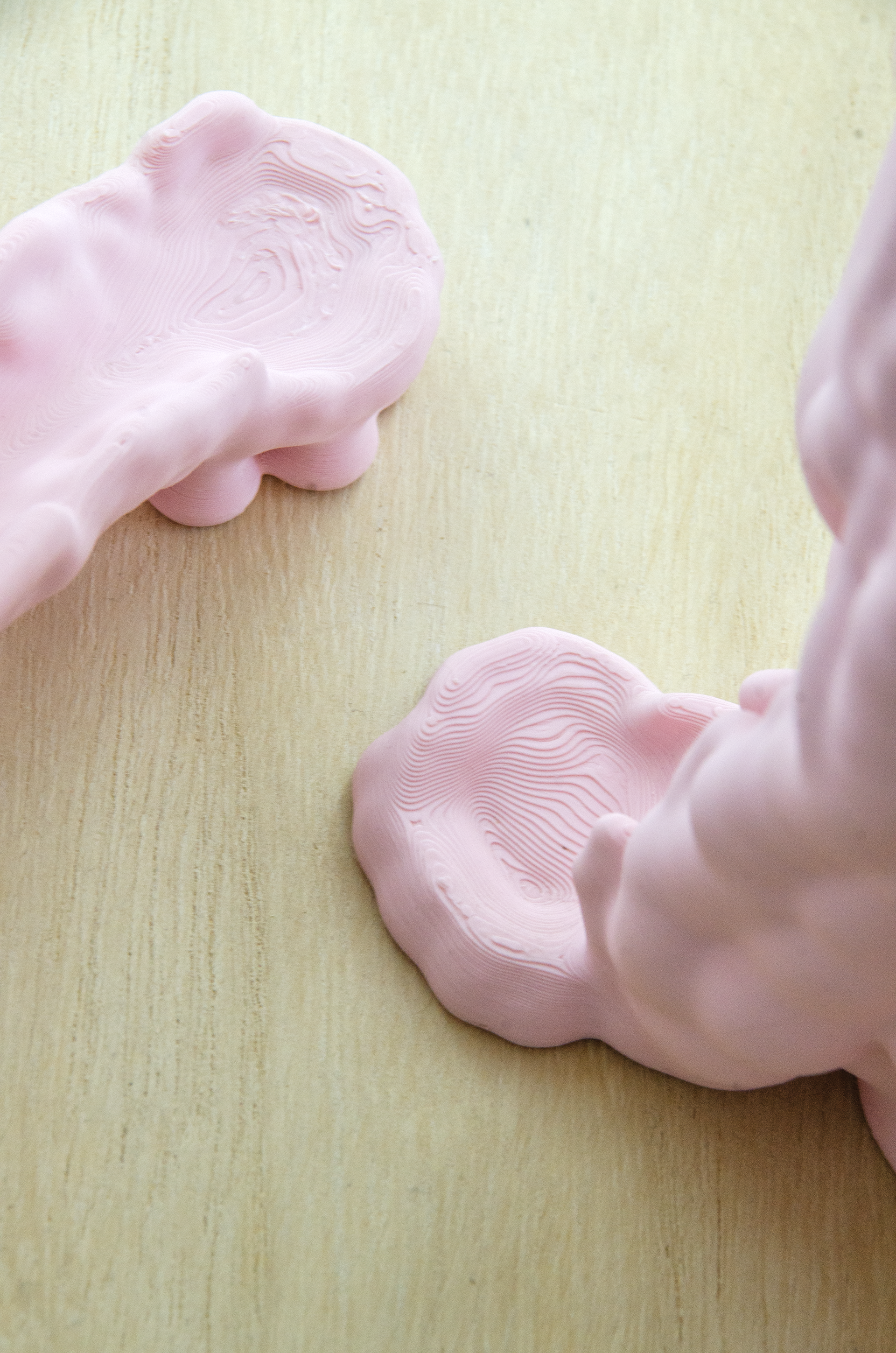
Group Show:
BRANCHING STREAMS. SKETCHES OF KINSHIP. 15th edition of Biennal of Contemporary African Art in Dakar under the title: The Wake
Period: 18, May - 15, September 2024
Organiser: A research exhibition conceived by the project Reconnecting “Objects”
Organiser: A research exhibition conceived by the project Reconnecting “Objects”
Musée Théodore Monod d'art africain. Place Soweto, Dakar. 2024
Curatorial Team:
Lotte Arndt, ayoh kré Duchâtelet and Lionel Maes (La Villa Hermosa), Sam Hopkins and Marian Nur Goni, Rossila Goussanou, Lennon Mhishi, Lucie Mbogni Nankeng, Sophie Schasiepen.
Lotte Arndt, ayoh kré Duchâtelet and Lionel Maes (La Villa Hermosa), Sam Hopkins and Marian Nur Goni, Rossila Goussanou, Lennon Mhishi, Lucie Mbogni Nankeng, Sophie Schasiepen.
in close dialogue with:
Bénédicte Savoy, Ciraj Rassool, El Hadji Malick Ndiaye, Albert Gouaffo and Dan Hicks.
Bénédicte Savoy, Ciraj Rassool, El Hadji Malick Ndiaye, Albert Gouaffo and Dan Hicks.
Artists and authors:
Mikael Assilkinga, Lamine Badji, Nilla Banguna, Andri Burnett, Serges Demefack, Lune Diagne, Mati Diop, Stevie Douanla, Ekaterina Golovko, Mamadou Khouma Gueye, Sybil Coovi Handemagnon, Anna Helfer, Te Herekiekie Herewini, Robyn Humphreys, Fatima Jobe and the IMADI team, Bongani Kona, Aram Lee, Kegorogile Makgatle, Fungai Marima, Sibusiso Mkhize, Modboye, Masello Motana, Jens Mühlhoff, Emmanuelle Nsunda, Camilo Sandoval, Nathan Schönewolf, Fally Sene Sow, Ken Aicha Sy, Alioune Thiam, Ibrahima Thiaw, Isabelle Thomas, Sidoine Yonta, Lauriane Yougang.
Mikael Assilkinga, Lamine Badji, Nilla Banguna, Andri Burnett, Serges Demefack, Lune Diagne, Mati Diop, Stevie Douanla, Ekaterina Golovko, Mamadou Khouma Gueye, Sybil Coovi Handemagnon, Anna Helfer, Te Herekiekie Herewini, Robyn Humphreys, Fatima Jobe and the IMADI team, Bongani Kona, Aram Lee, Kegorogile Makgatle, Fungai Marima, Sibusiso Mkhize, Modboye, Masello Motana, Jens Mühlhoff, Emmanuelle Nsunda, Camilo Sandoval, Nathan Schönewolf, Fally Sene Sow, Ken Aicha Sy, Alioune Thiam, Ibrahima Thiaw, Isabelle Thomas, Sidoine Yonta, Lauriane Yougang.